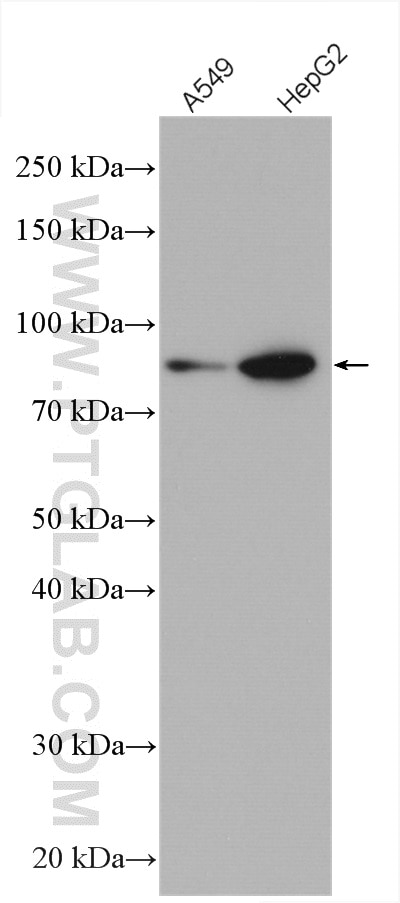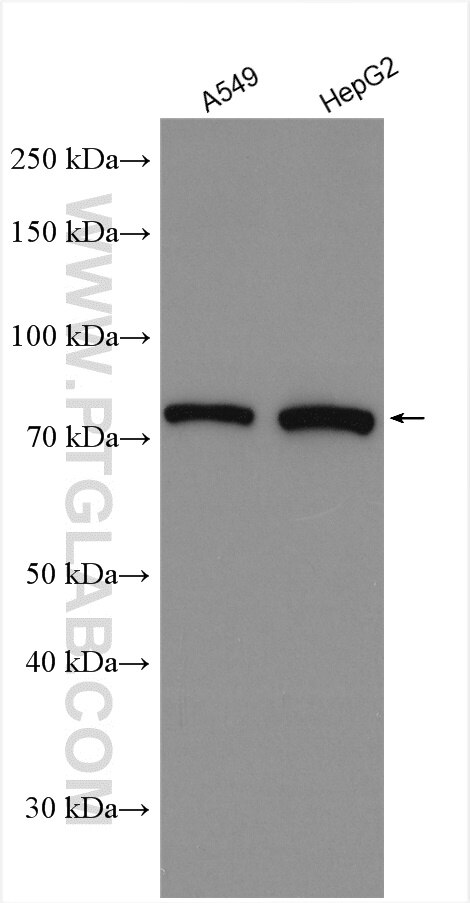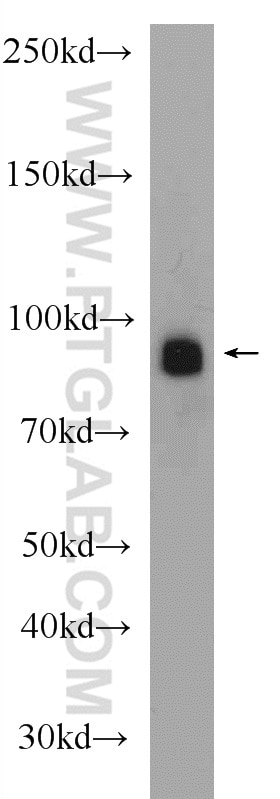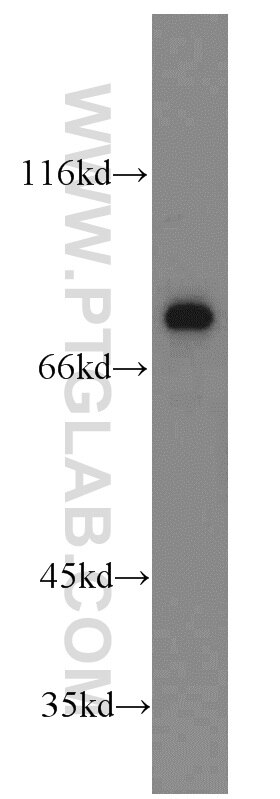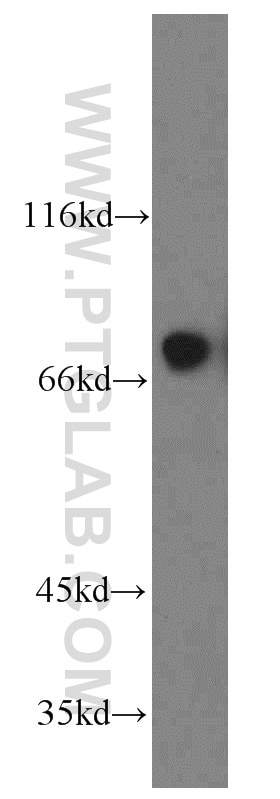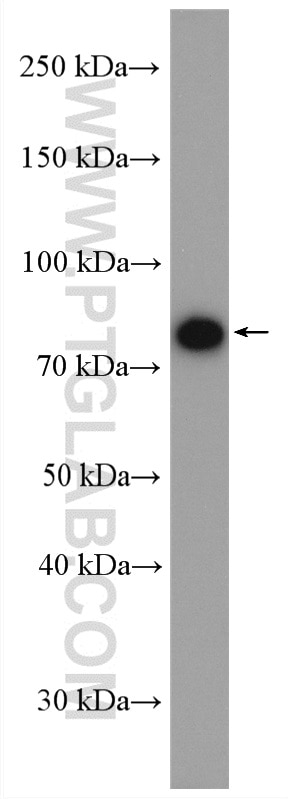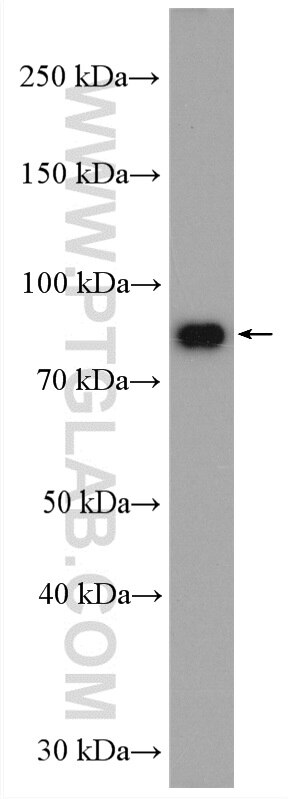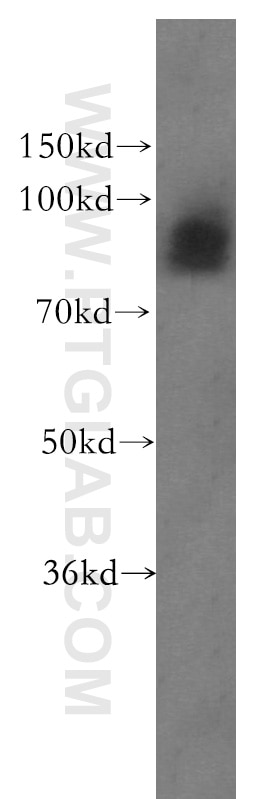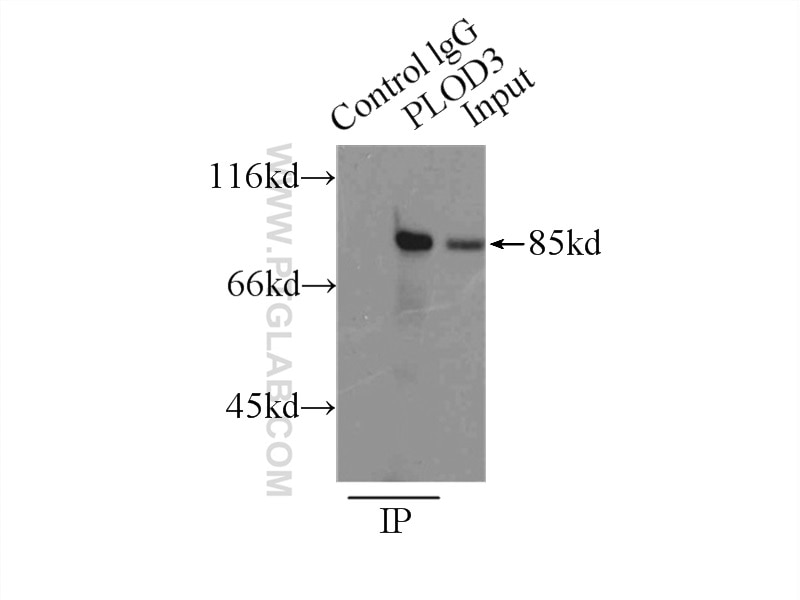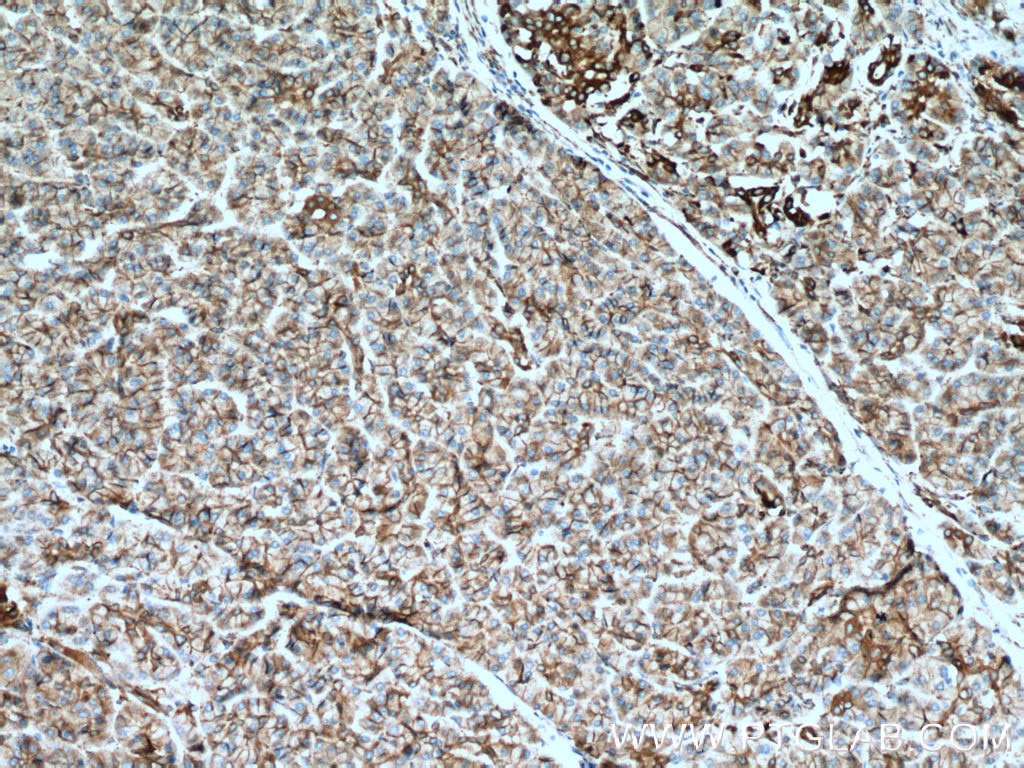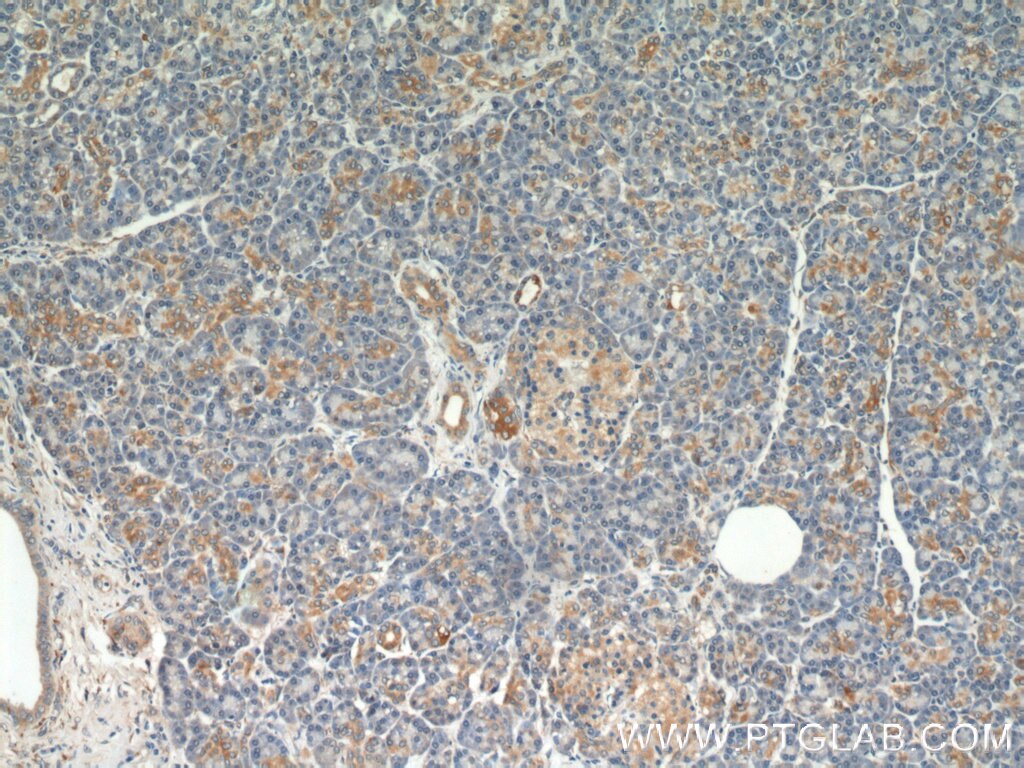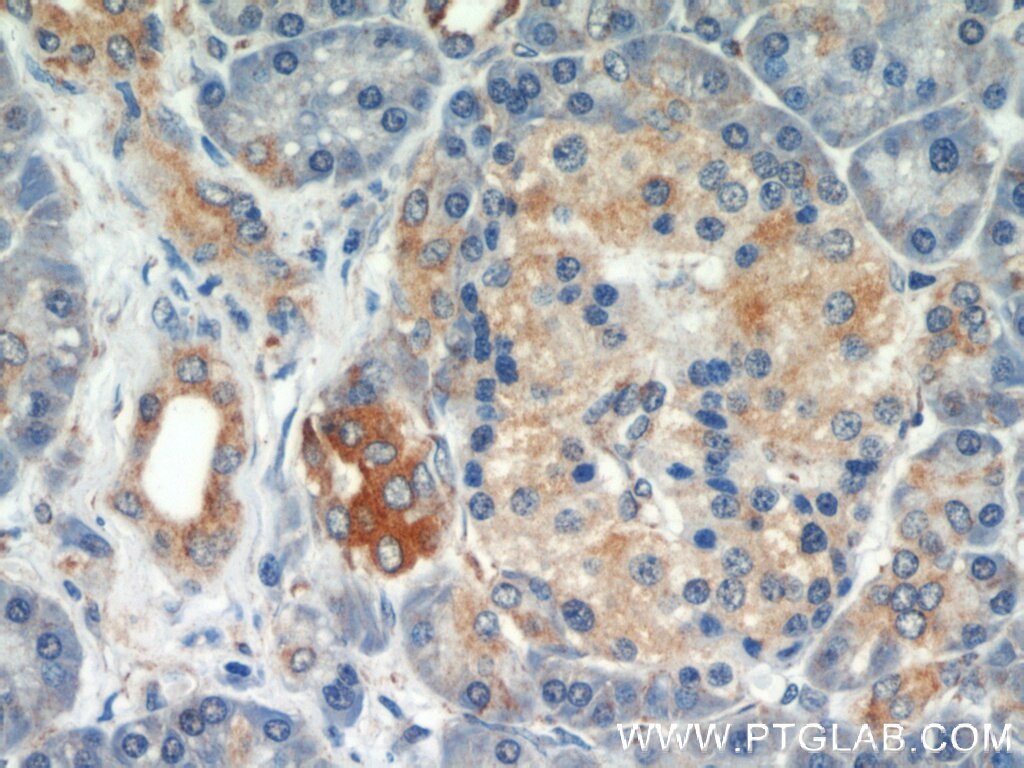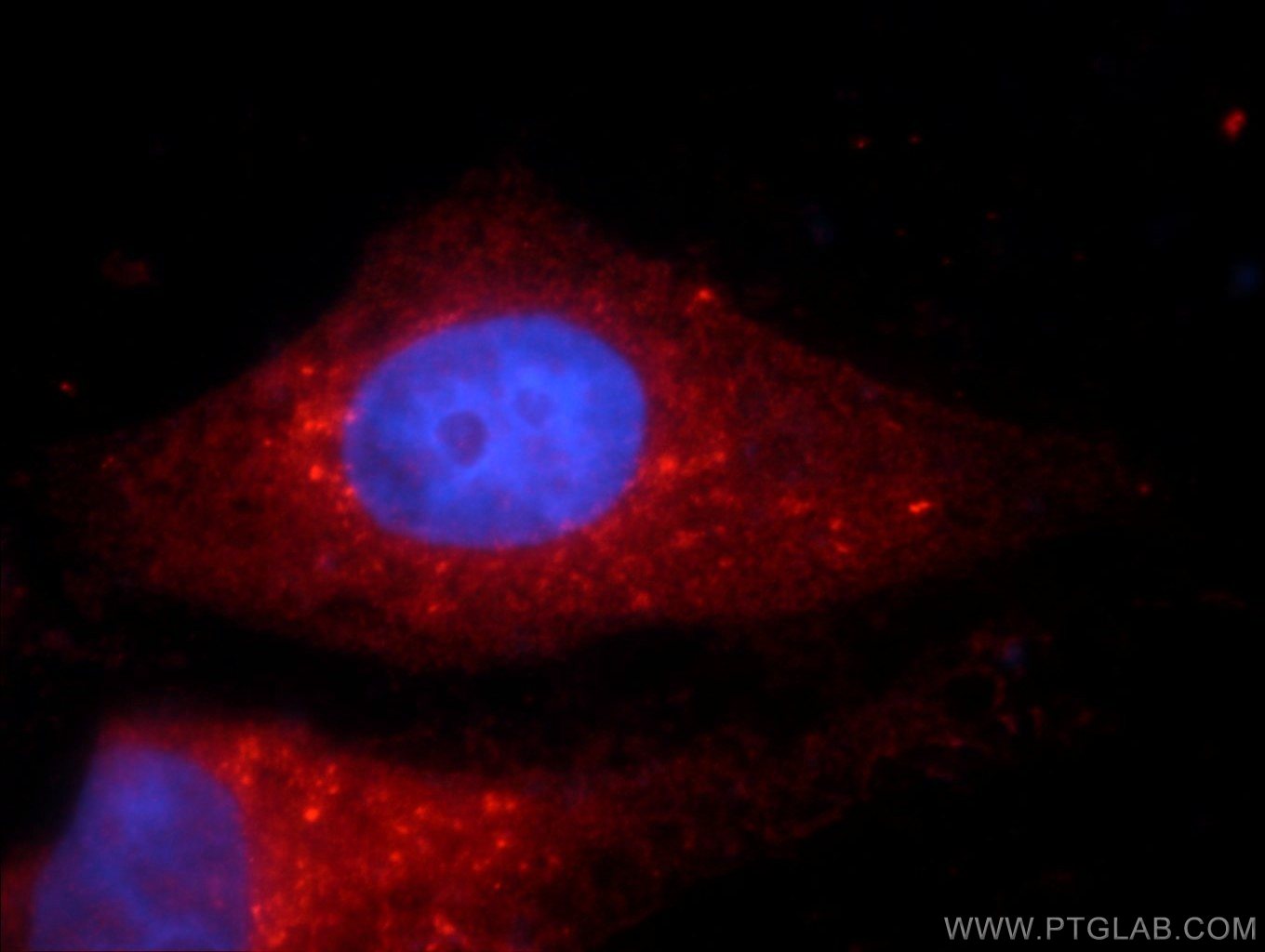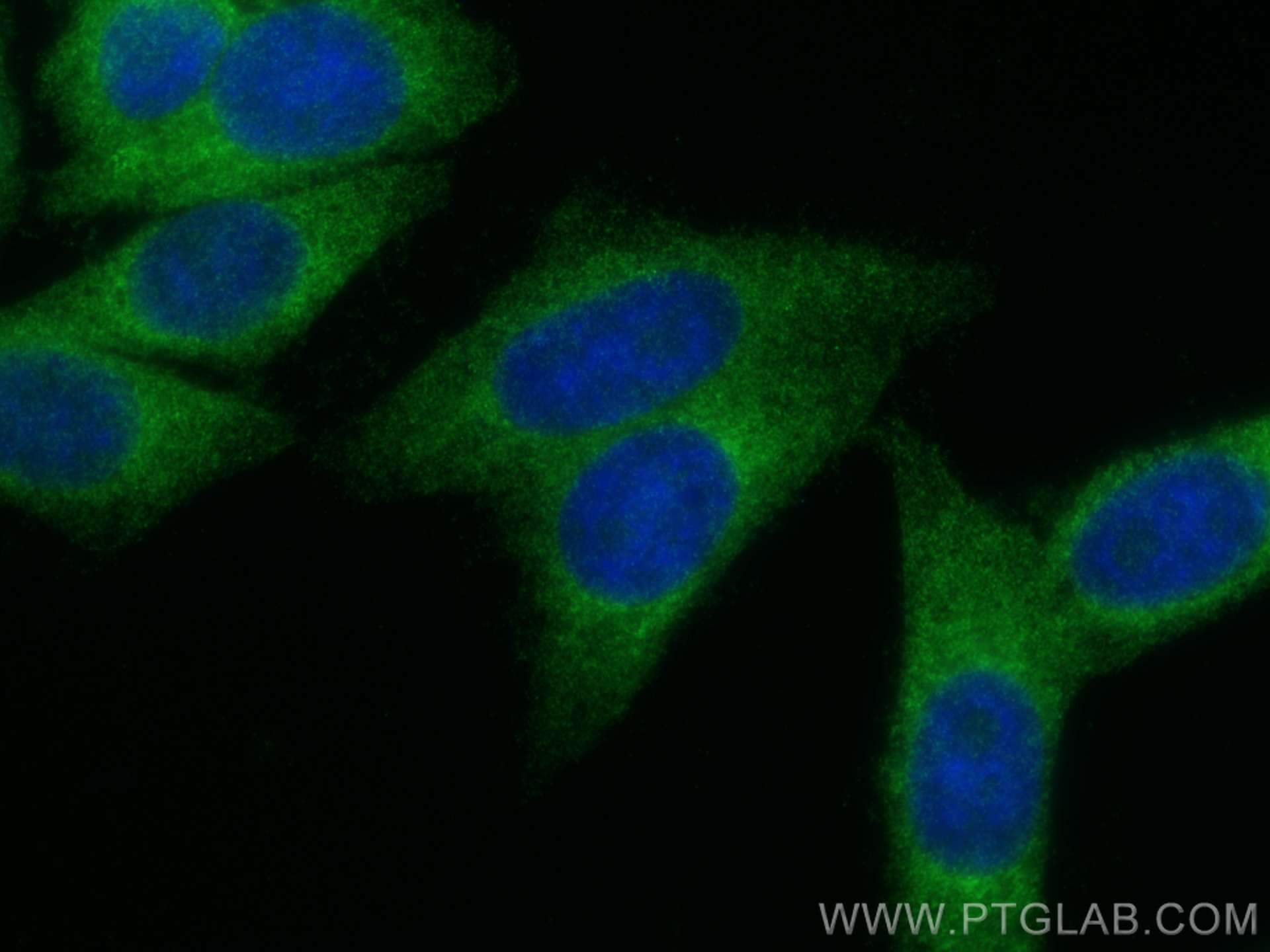- Featured Product
- KD/KO Validated
PLOD3 Polyklonaler Antikörper
PLOD3 Polyklonal Antikörper für WB, IHC, IF/ICC, IP, ELISA
Wirt / Isotyp
Kaninchen / IgG
Getestete Reaktivität
human, Maus, Ratte und mehr (1)
Anwendung
WB, IHC, IF/ICC, IP, ELISA
Konjugation
Unkonjugiert
Kat-Nr. : 11027-1-AP
Synonyme
Geprüfte Anwendungen
| Erfolgreiche Detektion in WB | A549-Zellen, HeLa-Zellen, HepG2-Zellen, humanes Plazenta-Gewebe, Maus-Plazenta-Gewebe, PC-3-Zellen |
| Erfolgreiche IP | HepG2-Zellen |
| Erfolgreiche Detektion in IHC | humanes Pankreaskarzinomgewebe, humanes Pankreasgewebe Hinweis: Antigendemaskierung mit TE-Puffer pH 9,0 empfohlen. (*) Wahlweise kann die Antigendemaskierung auch mit Citratpuffer pH 6,0 erfolgen. |
| Erfolgreiche Detektion in IF/ICC | HepG2-Zellen |
Empfohlene Verdünnung
| Anwendung | Verdünnung |
|---|---|
| Western Blot (WB) | WB : 1:2000-1:16000 |
| Immunpräzipitation (IP) | IP : 0.5-4.0 ug for 1.0-3.0 mg of total protein lysate |
| Immunhistochemie (IHC) | IHC : 1:100-1:400 |
| Immunfluoreszenz (IF)/ICC | IF/ICC : 1:50-1:500 |
| It is recommended that this reagent should be titrated in each testing system to obtain optimal results. | |
| Sample-dependent, check data in validation data gallery | |
Veröffentlichte Anwendungen
| KD/KO | See 4 publications below |
| WB | See 26 publications below |
| IHC | See 7 publications below |
| IF | See 10 publications below |
| IP | See 1 publications below |
Produktinformation
11027-1-AP bindet in WB, IHC, IF/ICC, IP, ELISA PLOD3 und zeigt Reaktivität mit human, Maus, Ratten
| Getestete Reaktivität | human, Maus, Ratte |
| In Publikationen genannte Reaktivität | human, drosophila, Maus, Ratte |
| Wirt / Isotyp | Kaninchen / IgG |
| Klonalität | Polyklonal |
| Typ | Antikörper |
| Immunogen | PLOD3 fusion protein Ag1480 |
| Vollständiger Name | procollagen-lysine, 2-oxoglutarate 5-dioxygenase 3 |
| Berechnetes Molekulargewicht | 738 aa, 85 kDa |
| Beobachtetes Molekulargewicht | 80-85 kDa |
| GenBank-Zugangsnummer | BC011674 |
| Gene symbol | PLOD3 |
| Gene ID (NCBI) | 8985 |
| Konjugation | Unkonjugiert |
| Form | Liquid |
| Reinigungsmethode | Antigen-Affinitätsreinigung |
| Lagerungspuffer | PBS with 0.02% sodium azide and 50% glycerol |
| Lagerungsbedingungen | Bei -20°C lagern. Nach dem Versand ein Jahr lang stabil Aliquotieren ist bei -20oC Lagerung nicht notwendig. 20ul Größen enthalten 0,1% BSA. |
Hintergrundinformationen
PLOD3, also named as LH3, forms hydroxylysine residues in -Xaa-Lys-Gly- sequences in collagens. These hydroxylysines serve as sites of attachment for carbohydrate units and are essential for the stability of the intermolecular collagen cross-links. The major function of PLOD3 in osteoblasts is to glucosylate galactosylhydroxylysine residues in type I collagen.
Protokolle
| PRODUKTSPEZIFISCHE PROTOKOLLE | |
|---|---|
| WB protocol for PLOD3 antibody 11027-1-AP | Protokoll herunterladen |
| IHC protocol for PLOD3 antibody 11027-1-AP | Protokoll herunterladenl |
| IF protocol for PLOD3 antibody 11027-1-AP | Protokoll herunterladen |
| IP protocol for PLOD3 antibody 11027-1-AP | Protokoll herunterladen |
| STANDARD-PROTOKOLLE | |
|---|---|
| Klicken Sie hier, um unsere Standardprotokolle anzuzeigen |
Publikationen
| Species | Application | Title |
|---|---|---|
Nat Commun Molecular architecture of the multifunctional collagen lysyl hydroxylase and glycosyltransferase LH3. | ||
Nat Commun Regulation of post-Golgi LH3 trafficking is essential for collagen homeostasis. | ||
Am J Hum Genet A connective tissue disorder caused by mutations of the lysyl hydroxylase 3 gene. | ||
Matrix Biol Antibodies and methods for immunohistochemistry of extracellular matrix proteins. | ||
PLoS Genet Abnormal type I collagen post-translational modification and crosslinking in a cyclophilin B KO mouse model of recessive osteogenesis imperfecta. |
